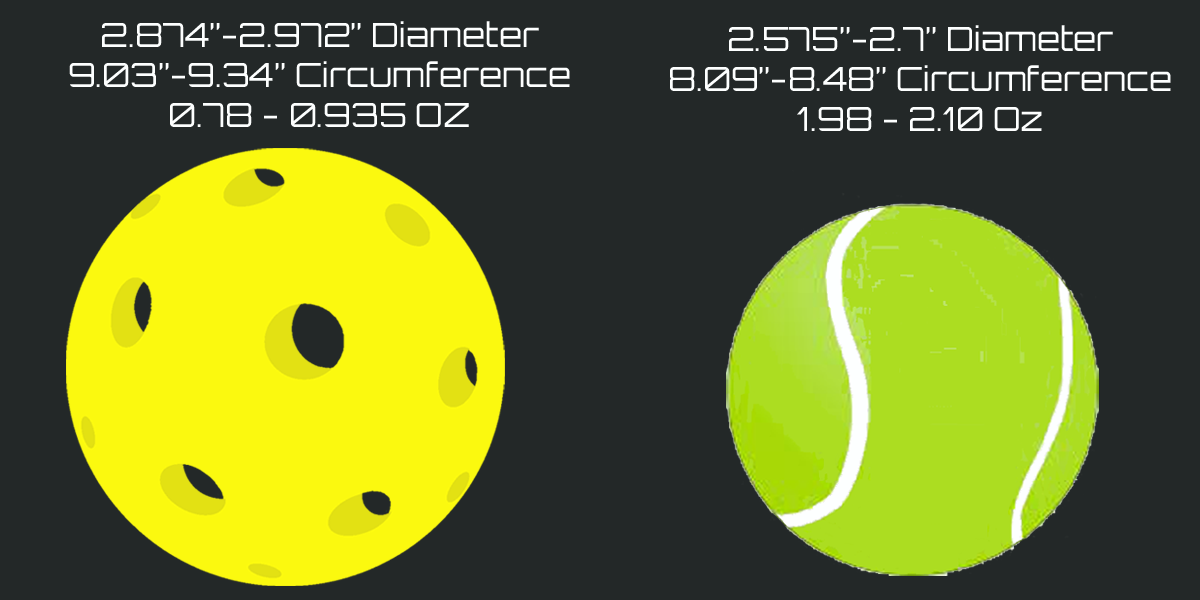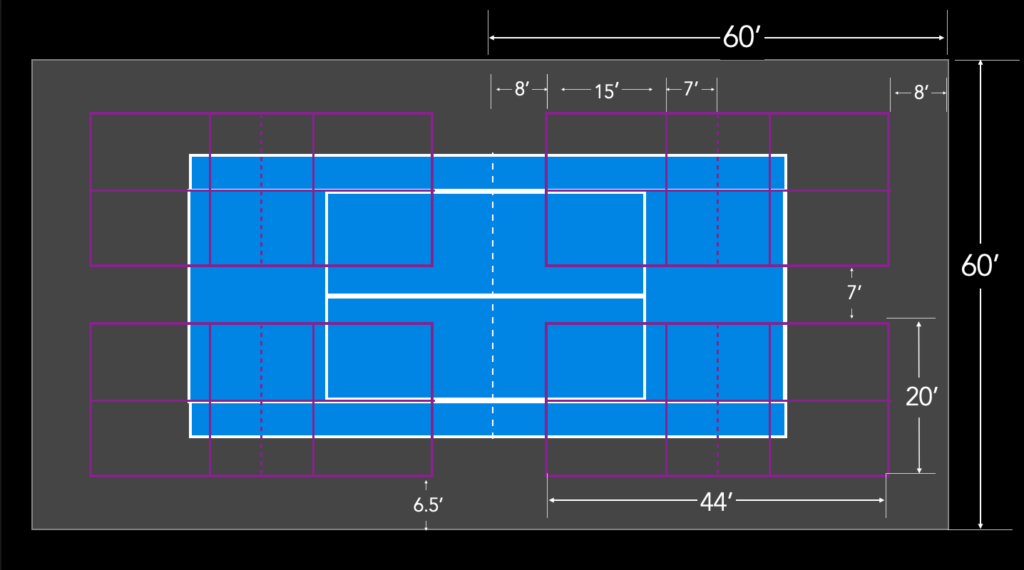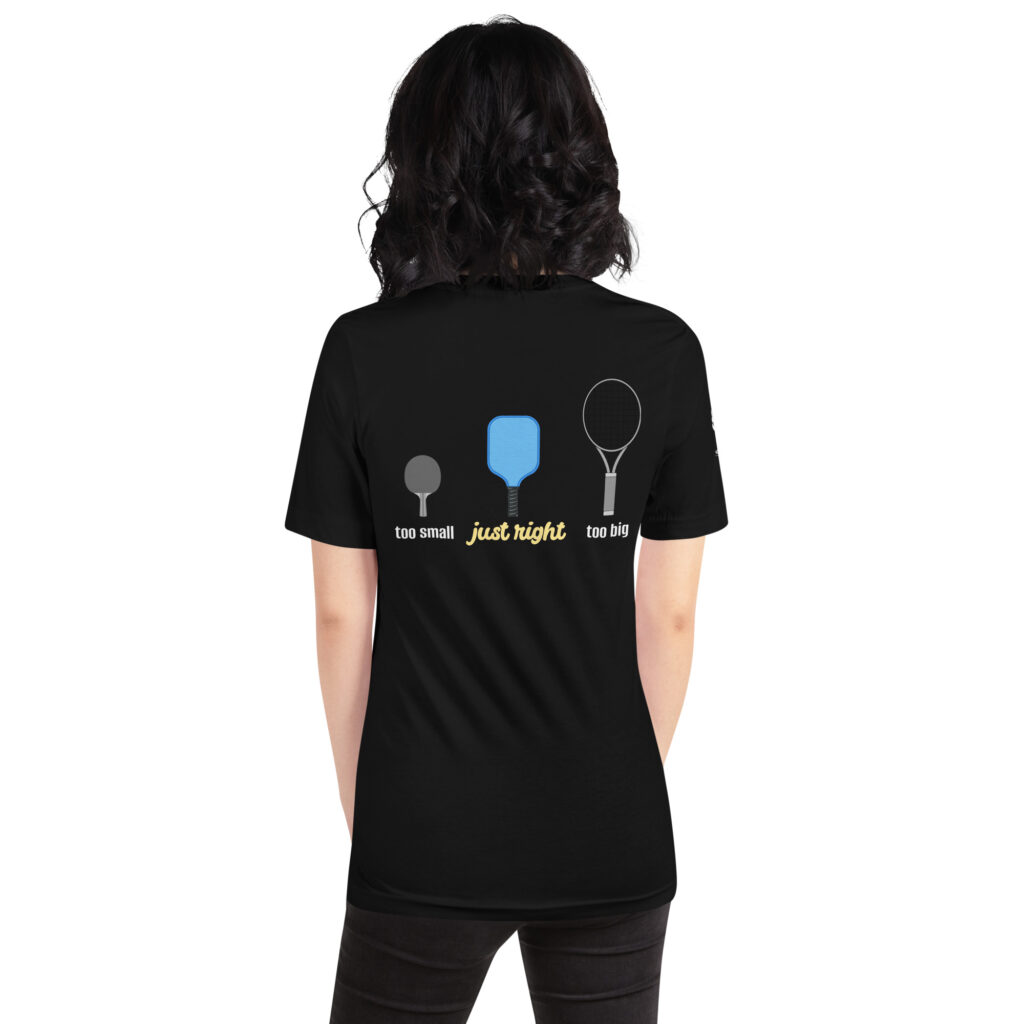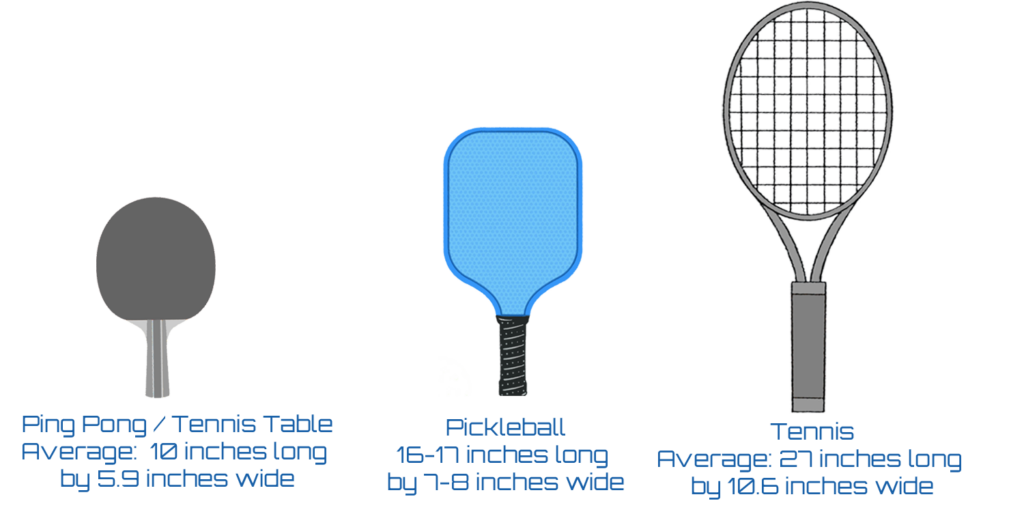Pickleball versus Tennis
With the gain in popularity of pickleball, you often see pickleball and tennis being played at the same venues. So how do these sports stack up? While one of the sports (pickleball) was based off the other (tennis), there are a lot of differences between pickleball and tennis. When it comes to the difference between pickleball and tennis, the biggest areas that vary are the racquet, the balls, and the court size.
First the Similarities
While we’ll focus mainly on the differences in this comparison, it’s important to note there are a few similarities. For one, both have tremendous health benefits and they both have health risks with injuries common from over use and over excursion. The other big similarity is both these racquet sports have a similar style of play. Played mainly outdoors (pickleball with it’s smaller court and lower bounce is also often played indoors in gyms with high ceilings), both use nets for opponents to face each other during play. They can played on the same surface and use shots that can be performed before and after a ball bounces. They both start with a serve and return shots back and forth until the round is over.
Comparing the experience: is there a difference between pickleball and tennis while you're playing?
There is a difference between pickleball and tennis when it comes to the feel and experience of playing the sports. Since the pickleball court is smaller, the pace of play is usually faster. In addition, the dynamics of the wiffle-like pickleball means the ball travels slower than tennis, resulting in players being more successful in return hits. This means rounds and volleying usually lasts longer.
This could be why the sport has gained so much in popularity. Even as a beginner you can get a few hits in per round. And with the shorter court the serve is easier. Tennis can be discouraging to new players. Serving is much harder and returning serves and hits can be more difficult with the faster ball flights.
Racquets: Pickleball Paddles vs. Tennis Rackets
One of the biggest differences in pickleball and tennis is the equipment used to play. While both fall into the category of a racquet sport, pickleball is played with a paddle. Originally, ping pong paddles were repurposed for pickleball. These wooden paddles were eventually replaced with a paddle specifically for pickleball, which are a bit larger and usually made of a lighter weight composite material. Tennis is played with rackets made of strings as the hitting surface. This provides a softer surface for the harder tennis ball. (We, of course, have a biased preference and even made a t-shirt about it: Pickleball the Goldilocks of the racket sports.)
Racket and paddle comparison
Balls: difference between pickleball and tennis balls
Another difference between pickleball and tennis equipment is the ball used. Pickleball uses a ball the resembles a large size wiffle-ball. Also, since pickleball is also commonly played indoors, there is a special pickleball for indoor play to accommodate for the smooth surface of indoor gym courts and the heaviness and holes needed to combat wind for outdoor play. Regardless of an indoor or outdoor ball, pickleball’s plastic ball with holes travels slower than a tennis ball and does not bounce nearly as high. The tennis ball is harder with a rubber shell. It is meant for greater bounce, speed, and spin.
Tennis balls vs. Pickleball balls

Courts: difference between pickleball and tennis courts
Now let’s look at the difference between pickleball and tennis when it comes to where you play. The biggest variation is the court size. The pickleball court is smaller than a tennis court. In additon to size, the difference between pickleball and tennis courts is also the surface. Pickleball is played on a harder surface. Usually the common asphault or concrete coated surface of most tennis courts. However, it is rare for pickleball to be played on the clay or grass surfaces that tennis can be played on.
Difference between pickleball and tennis court sizes
The regulation pickleball court size is 20 feet (6.10 m) wide by 44 feet (13.41 m) long. In pickleball, the same sized court is used for singles and doubles play. The rulebook states that the total minimum play area is 30 feet (9.14 m) wide by 60 feet (18.29 m) long when out-of-bounds areas are included.
A tennis court is 78 ft by 36 ft (27 ft for singles courts) with the entire floor space of 120 feet long and 60 feet wide to incorporate the out-of-bounds area. Most the time four pickleball courts can fit in the floor space of one tennis court.
How to Build a Pickleball Court
Tennis vs. Pickleball Court Dimensions

Scoring: difference between how tennis and pickleball score
While some of the rules can be similar and the play looks similar, the difference between pickleball and tennis continues with how each are scored. Pickleball’s scoring feels closer to table tennis than to tennis.
In pickleball, only the player/team that serves can win a point, and games are played to 11 and require a two-point margin of victory to win. Here’s how scoring works in pickleball.
By contrast, tennis points are counted with 0, 15, 30, and 40, and face off in a deuce. The first player to win 4 points wins a game, while the first player to win 6 games wins a set. To win the match, a player must win 2 sets.
Noise: The great tennis versus pickleball noise difference
Pickleball has a different noise than tennis. Since it is a solid paddle hitting a plastic ball, the pitch is higher than the rubber-coated tennis ball hitting a stringed-racket. For that reason, pickleball often gets more complaints on the noise. For reference in field studies, the recorded decibel noise for pickleball play averaged around 45 decibels with peaks sometimes 60-65 dB. Depending on the study, tennis shots averaged between 40-45 dB with peaks to 60 dB. For referencing passing cars emit about 60 decibels.
For more details on the noise of pickleball, see our related article.
Health benefits: Tennis versus Pickleball health benefits comparison
Apple Watch study compares the health benefits of tennis and pickleball
The popularity in the sport of pickleball is mainly attributed to how fun it is coupled with how easy it is to learn. After one lessons, most have enough to play at a social level. But does it offer similar health benefits.
Preliminary study from Apple found that both tennis and pickleball offer significant physical and mental health benefits. Participants often played for long periods of time and average peak heart rates within 70 percent of their max. Moods of depression were rare and lower among frequent pickleball and tennis players. Analysis showed pickleball workouts were slightly longer than tennis but peak heart rates were slightly lower.
So it appears both sports provide the health benefits we need today. The bottomline is whatever sport you enjoy most and can do on a consistent basis, you should be practicing.
Health Downsides
Both are associated with injuries if not careful. Recently, pickleball has been called out with the health costs. This is mainly due to the mass popularity. Tennis and pickleball suffer from common injuries that result from poor warm=ups, overuse, and lack of cross training. No matter the sport, it is important to listen to your body and consult a medical professional, especailly if you are starting from a sedimentary lifestyle.








Pingback: How to Build a Pickleball Court (Step by Step Guide with Pickleball Court Dimensions) | Pickleball Fever | MOMUS